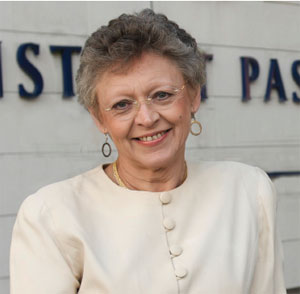|
December 2017

Issue Home >>
|

 In 1983, clinicians worldwide did not know why their patients were dying from a mysterious virus. Today, we know that there are 37 million people living with human immunodeficiency virus (HIV) in the world. We also know that there are two million new HIV infections every year. This is all thanks to virologist Professor Françoise Barré-Sinoussi who co-discovered HIV and dedicated her life to the fight against AIDS. In 2008, she received a Nobel Prize in Medicine for her ground-breaking co-discovery and research contributions. In 1983, clinicians worldwide did not know why their patients were dying from a mysterious virus. Today, we know that there are 37 million people living with human immunodeficiency virus (HIV) in the world. We also know that there are two million new HIV infections every year. This is all thanks to virologist Professor Françoise Barré-Sinoussi who co-discovered HIV and dedicated her life to the fight against AIDS. In 2008, she received a Nobel Prize in Medicine for her ground-breaking co-discovery and research contributions.
The UWI and CARISCIENCE (a UNESCO-affiliated St. Augustine Campus based organisation) presented her Distinguished Open Lecture on the topic, The Challenges of HIV/AIDS in the 21st Century happening on November 24 at the Teaching and Learning Complex (TLC), UWI St. Augustine.
Professor Barré-Sinoussi’s involvement with retrovirology research dates back to the 1970s where as a young, female medical student, she sought out laboratory internships in biomedical sciences – which was unheard of at the time. According to a 2014 The Guardian UK article, through her own persistence, she was able to gain an internship at Pasteur – a male-dominated laboratory that was not used to having young, working-class women like Barré-Sinoussi in their midst. Her determination paid off as she went on to gain her PhD there in 1975.
The work that started in those laboratories laid the foundation for the 1983 scientific breakthrough the world desperately needed, where she and her colleague Luc Montagnier discovered a retrovirus in patients with swollen lymph glands that attacked critical components of the body’s immune system. The retrovirus, which was later named Human Immunodeficiency Virus (HIV), was identified as the cause of AIDS. This discovery, for which Professors Barré-Sinoussi and Montagnier received the 2008 Nobel Prize for Medicine or Physiology, was the basis for radical improvement in HIV diagnosis and treatment.
|





